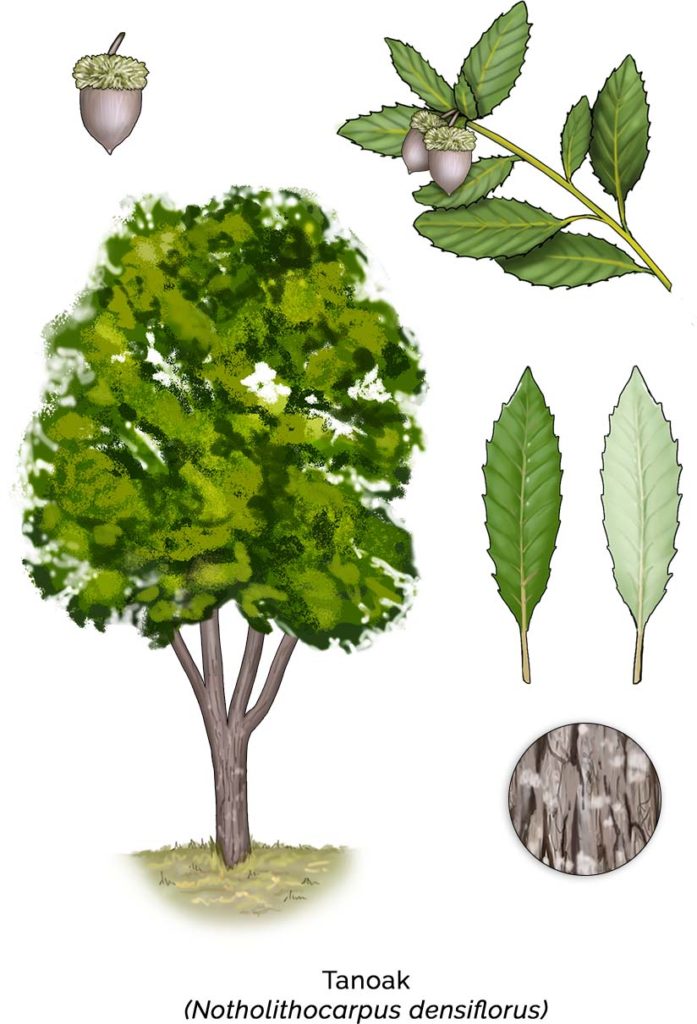Tanoak (Notholithocarpus densiflorus) is an evergreen tree or large shrub native to the Pacific Coast, primarily found from southern Oregon through California. It features leathery, oblong leaves with serrated edges, and its small, inconspicuous flowers give way to acorns enclosed in a spiky, bristled cup, resembling a blend of oak and chestnut characteristics. The bark is grayish-brown and deeply furrowed on mature trees. Tanoak thrives in a variety of habitats, from coastal forests to mixed evergreen woodlands, often coexisting with redwoods, Douglas-fir, and madrone. It is especially abundant in moist, well-drained soils but can tolerate drier conditions in its range.

